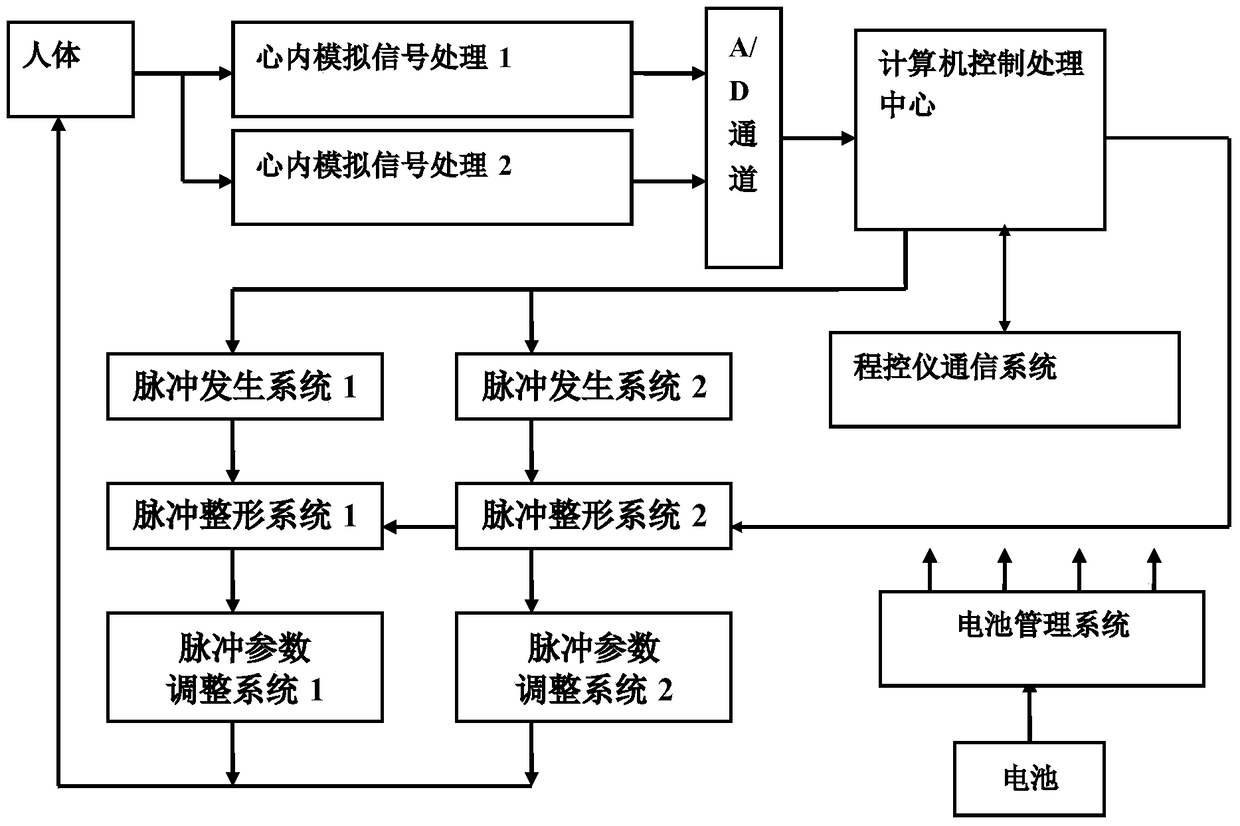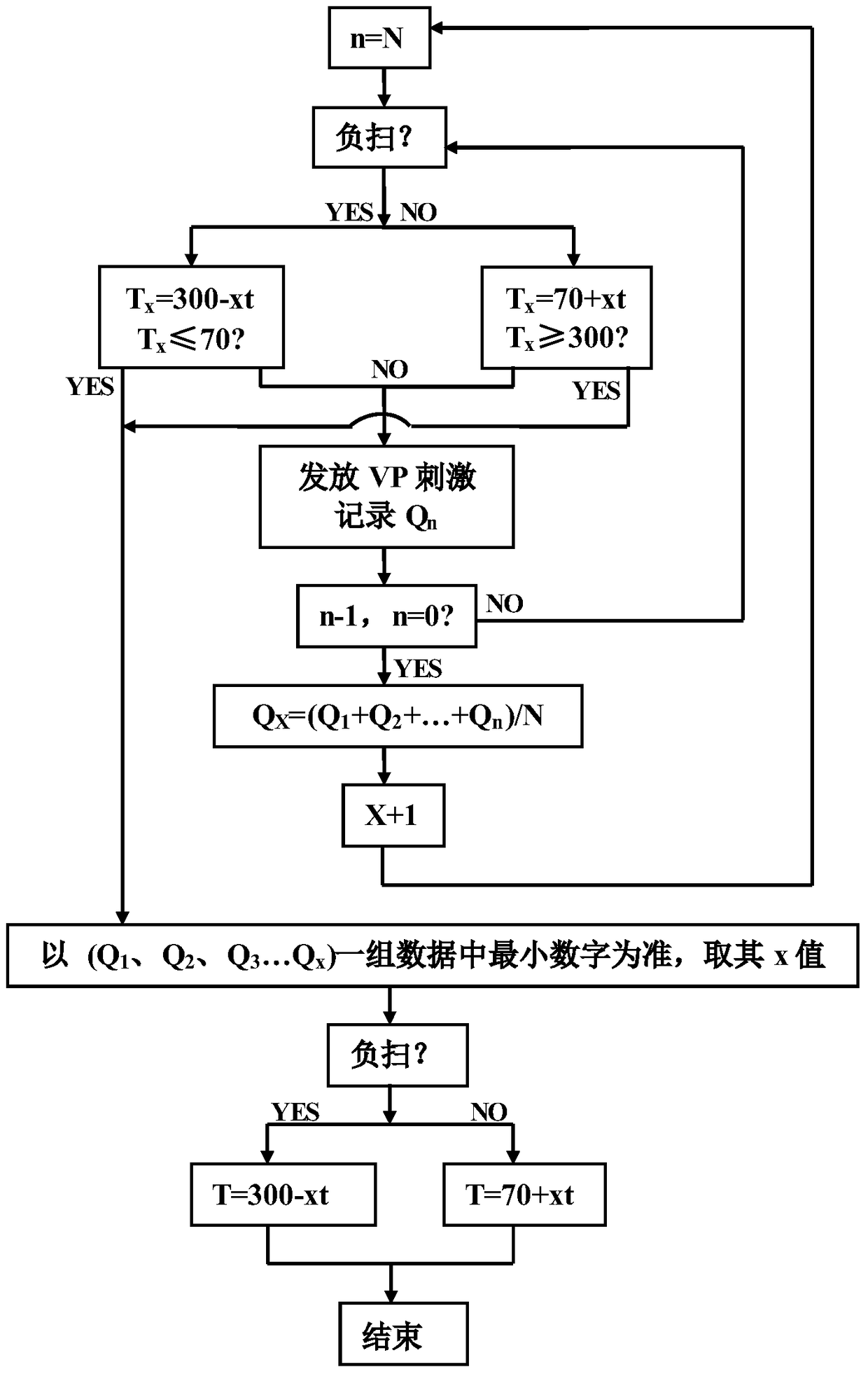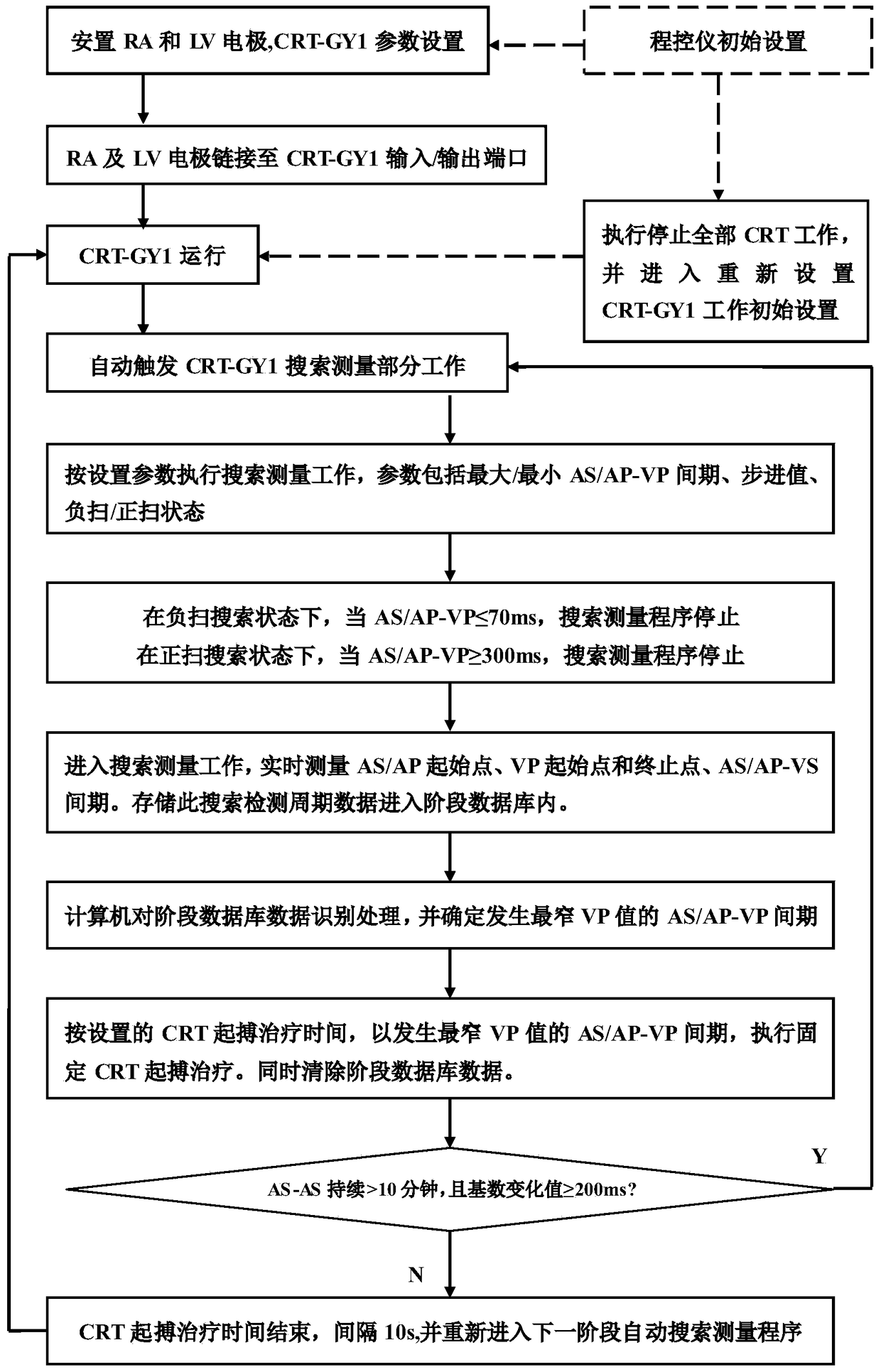A heart resynchronization therapy system based on auto-atrioventricular conduction
A technology of cardiac resynchronization and atrioventricular conduction, applied in physical therapy, artificial respiration, etc., can solve the problems of weakening atrial "assist pump function, shortening ventricular diastolic time, and reducing cardiac output, etc., and achieves low cost of use. Broad, low-power effects
- Summary
- Abstract
- Description
- Claims
- Application Information
AI Technical Summary
Problems solved by technology
Method used
Image
Examples
Embodiment 1
[0071] 1. Example 1: Non-paced RA approach
[0072] (1) Implementation conditions
[0073] The patient was in sinus rhythm without obvious arrhythmia, the average ventricular rate was >50-60bpm, and the electrocardiogram showed that the P wave and the QRS wave had a fixed relationship of 1:1.
[0074] (2) The pacing electrode catheter is implanted and connected to CRT-GZ1
[0075] Using conventional techniques under local anesthesia, RA electrodes and LV electrodes were implanted via the subclavian vein (the LV electrodes were placed in the lateral or posterior vein of the coronary vein). The electrodes and LV electrodes are reliably connected to the atrial and ventricular input / exit of CRT-GZ1, and the electrodes and CRT-GZ1 are fixed and embedded in the upper chest subcutaneously.
[0076] (3) Parameter setting
[0077] The pacing mode of CRT-GZ1 is atrial synchronous ventricular pacing (VAT); the basic pacing frequency (TS1S1 interval) set for the patient is lower than t...
Embodiment 2
[0085] 2. Embodiment 2: pacing RA mode
[0086] (1) Implementation conditions
[0087] The patient has obvious sinus bradycardia, sinoatrial block or sinus arrest, and the average ventricular rate is <50bpm.
[0088] (2) Connection of pacing lead and CRT-GZ1
[0089] Using conventional techniques under local anesthesia, RA electrodes and LV electrodes were implanted via the subclavian vein (the LV electrodes were placed in the lateral or posterior vein of the coronary vein). The electrodes and LV electrodes are reliably connected and fixed to the atrial and ventricular input / exit of the CRT-GZ1, and the electrodes and the CRT-GZ1 are fixed and embedded under the skin of the upper chest.
[0090] (3) Parameter setting
[0091] CRT-GZ1 pacing mode is DDD / DDDR; set the patient's basic pacing frequency (TS1S1 interval) higher than the average heart rate of 5, 10, 15, 20bpm, specific parameters can be selected; set positive and / or negative Scan step (5, 10, 15, 20ms), minimum o...
PUM
 Login to View More
Login to View More Abstract
Description
Claims
Application Information
 Login to View More
Login to View More - R&D
- Intellectual Property
- Life Sciences
- Materials
- Tech Scout
- Unparalleled Data Quality
- Higher Quality Content
- 60% Fewer Hallucinations
Browse by: Latest US Patents, China's latest patents, Technical Efficacy Thesaurus, Application Domain, Technology Topic, Popular Technical Reports.
© 2025 PatSnap. All rights reserved.Legal|Privacy policy|Modern Slavery Act Transparency Statement|Sitemap|About US| Contact US: help@patsnap.com



